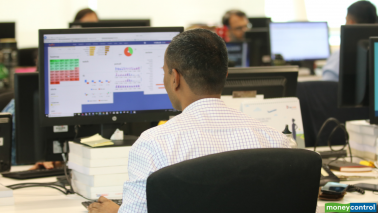In a research paper, the former CEA questioned the government's official GDP growth figures and said that the country may have grown at an average 4.5 percent in the years between 2011-12 and 2016-17, instead of the 7 percent average official data.
Former Chief Economic Adviser (CEA) Arvind Subramanian on July 10 has defended his stance that the gross domestic product (GDP) was overestimated by saying he used a framework to validate the GDP from the demand side.
"I have used a framework to validate, and not to estimate," he said and added that the GDP deflator has been underestimated. "Now, those who have to prove that were are close to achieving our GDP estimation are under pressure," he said.
The former CEA said that India sustained high growth rate post 2011, despite negative macros. He said that some major macro-economic shocks after 2011 like a collapse in exports, twin balance sheet crisis, UPA II policy paralysis, severe and consecutive agricultural droughts, and demonetisation lead to key macro engines to stall.
Yet, GDP growth slowed only marginally from 7.7 percent to 6.9 percent. A possible way of explaining the puzzling situation of sustaining a growth boom despite negative macros could be by comparing India's growth indicator experience with that of other countries, before and after 2011.
"Four and a half in this scenario is good but not enough. The pre-1990s comparison is wrong. We would still be the second fastest growing economy that’s greater than $1 trillion, we would be substantially faster than the third largest economy Korea...4.5 is very respectable in the current circumstances," he said.
He said that no country has grown over 7 percent with exports below 5 percent.
In a research paper, Subramanian questioned the government's official GDP growth figures and said that the country may have grown at an average 4.5 percent in the years between 2011-12 and 2016-17, instead of the 7 percent official figures.
India's former chief statistician Pronab Sen said that most of the volume indicators which have been used are precisely the indicators which were used by the CSO to calculate the GDP.
"So if you are correlating the part, and then correlating to some of those (indicators), there is no surprise. Now you are using a series which is completely independent of it. Does that give enough ammunition to question growth rates, perhaps it does...," he said at the same event.
Sen said that with the recent NSS report, which shows serious increase in unemployment, and many company reports of a downsizing of workforce, there is a concern.
"It also means you are replacing a lot of low-skilled labour with few high-skilled, highly paid labour. Why that would happen? The reason will be that if the technology that you are using is going up, there has been a lot of fear mongering on recent years about automation pulling us down. If the manufacturing data from the MCA is correct, automation has come, it has been there from last 7-8 years," Sen said.
Sen also said that GST data is a very good way of measuring intermediate consumption, i.e., the consumption of commodities by production units.
"It may not be a bad way of figuring out what is happening to investment, but as far as consumption is concerned, I am not sure if it is going to give you much information because as far as B2C transactions are concerned, unless there is a massive enforcement movement, the enforcement of the GST, one can already see massive gaps in trade processes and a lot of this is perfectly legitimate. So GST as a measure for B2B transactions is excellent but for B2C transactions, i am not very sure," he said.















